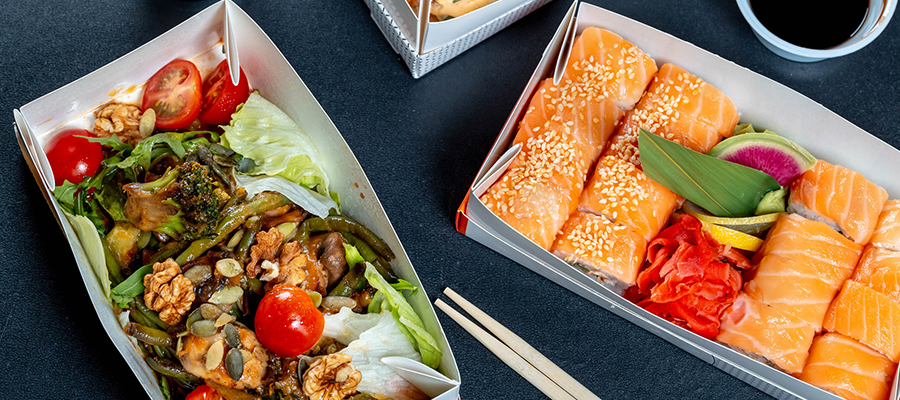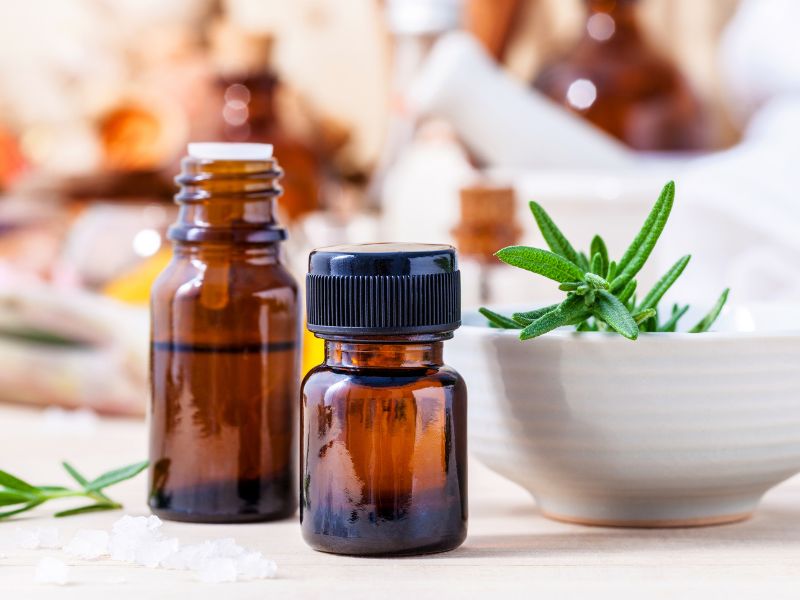As the beginning of the COVID-19 pandemic I was avoiding ordering takeout food completely, but as restaurants have put more safety measures in place and I have gotten tired of cooking every night, I have started to order it again on occasion. The problem with this is that a lot of the time some or all of the takeout food packaging is plastic. If everyone is stuck at home and ordering takeout, just imagine how much more plastic we are using! While ideally we would be moving away from single-use plastic containers altogether, it’s not realistic to assume that everyone will stop using them completely.
With that in mind, here are some tips on how to have the most sustainable and eco friendly to-go experience possible! Note: Not all takeout food is unhealthy! At this point during quarantine almost every restaurant is offering to go options, so there is a wide range of what types of food are available.
1. Know your takeout containers
Per- and polyfluoroalkyl substances (PFAS) are a family of human-made chemicals that are found in a wide range of products used by consumers and industry. [FDA] Many PFAS are resistant to grease, oil, water, and heat, and for this reason they are used in packaging. The FDA talks about the environmental and health affects of PFAS:
The widespread use of PFAS and their ability to remain intact in the environment means that over time PFAS levels from past and current uses can result in increasing levels of environmental contamination. Accumulation of certain PFAS has also been shown through blood tests to occur in humans and animals. While the science surrounding potential health effects of this bioaccumulation of certain PFAS is developing, evidence suggests it may cause serious health conditions.
Most sustainable types: biodegradable and compostable, aluminum, or refillable
Okay: Recyclable
Avoid: Styrofoam
See our blog post on Plastic Types to learn more: https://info.achs.edu/blog/plastic-types
2. Call ahead to ask about containers
It doesn’t hurt to pick a few restaurants that you might want to order from that night and call ahead to see what type of packaging they use. For example, there are a plethora of Thai food restaurants where I live, and I could go to any number of them. After calling a few, I know that one of them uses plastic clamshells, one uses styrofoam, and the third uses waxed brown paper. In this case, I’d opt for the third choice, and enjoy my delicious pad thai knowing that its packaging causes less harm to the environment.
3. Support local, sustainable businesses
It’s not only about the take out packaging, it’s also about the food inside! It’s always better to support a local restaurant or one that sources food sustainably than to purchase from a chain restaurant. These days, most restaurants are offering a “to-go” options, so takeout doesn’t necessarily mean fast food or unhealthy food.
Bonus : Advocate for sustainable food packaging
According to the organization Safer Chemicals Healthy Families, consumers should advocate for change: “Consumers should speak up and call for change. They can contact manufacturers and retailers to ask whether the food products they sell contain PFAS. They can also call on food retailers and elected officials to ban PFAS in all food contact materials.”
As our CMO Kate Harmon said recently, sustainability is not easily accessible to everyone:
“I want to point out that as much as sustainability and recycling are great and wonderful it is a privilege and primarily only something that was accessible for white people. People in poorer countries are deluged with our plastic waste. It washes up on their beaches, pollutes their waters, chokes their fish, destroys their air from burning it. We have the luxury and privilege of lobbyists that look out for us Stateside. In Africa or Asia, there are no lobbyists. So when you think about buying shampoo, dish detergent, disposable cutlery, food packaging, bread, some of that ends up in the water and floats over to Africa.”
References:
Emma Zang-Schwartz, M. (2019, January 17). All About Take Out Containers. Retrieved July 17, 2020, from https://www.becausehealth.org/all-about-take-out-containers-2540550848.html
https://www.ceh.org/wp-content/uploads/2019/05/CEH-Disposable-Foodware-Report-final-1.31.pdf
https://www.fda.gov/food/chemicals/and-polyfluoroalkyl-substances-pfas
Disclosure of Material Connection: I am the social media coordinator for the American College of Healthcare Sciences, the Institution that publishes this blog. However, all opinions are my own. This blog may contain affiliate links. I am disclosing this in accordance with the Federal Trade Commission’s 16 CFR, Part 255: “Guides Concerning the Use of Endorsements and Testimonials in Advertising.”
This article is for informational purposes only. It is not intended to treat, diagnose, cure, or prevent disease. This article has not been reviewed by the FDA. Always consult with your primary care physician or naturopathic doctor before making any significant changes to your health and wellness routine.
About American College of Healthcare Sciences
 American College founded in 1978, is a fully online accredited institute of higher education specializing in holistic health. Based in Portland, OR; our goal is to make research-driven and science-based holistic health education taught by industry-leading experts accessible to anyone anywhere while still giving students a hands-on experiential learning experience like a traditional college and a strong sense of community, school pride and student bond.
American College founded in 1978, is a fully online accredited institute of higher education specializing in holistic health. Based in Portland, OR; our goal is to make research-driven and science-based holistic health education taught by industry-leading experts accessible to anyone anywhere while still giving students a hands-on experiential learning experience like a traditional college and a strong sense of community, school pride and student bond.
This commitment to our students and graduates reflects in our current survey results that reflect 98% of our students would recommend ACHS to a friend or family member.
We believe education is the most powerful tool for changing an individual and the world around us.
When a person enrolls as ACHS, it is vitally important that they graduate with tools they need to forge their own holistic and sustainable missions, build up their communities confidently and changing the face of healthcare with knowledge.
For more information visit achs.edu.




